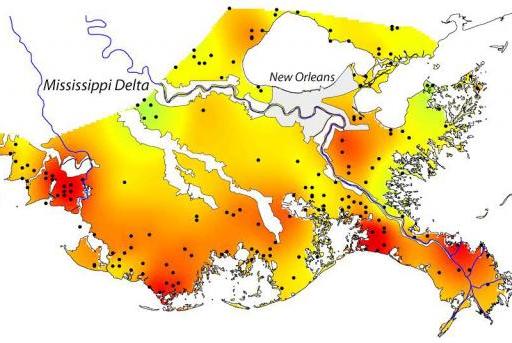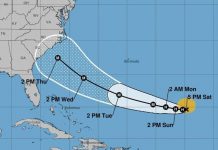
June 16 (UPI) — Researchers at Tulane University have developed a new map that details the varying rates at which land is sinking along the Louisiana coast.
“The novel aspect of this study is that it provides a map that shows subsidence rates as observed at the land surface,” Torbjörn Törnqvist, professor of geology at Tulane, said in a news release. “This sets it apart from previous attempts to map subsidence rates.”
Subsidence is a term for decreasing land elevation.
The latest calculations — detailed in the journal GSA Today — suggest Louisiana’s coastline is sinking at an average rate of more than one-third of an inch per year. But some coastal areas are sinking faster than others.
“This information will be valuable for policy decisions about coastal restoration, such as planning of large sediment diversions that are intended to make portions of Louisiana’s coast more sustainable,” said Jaap Nienhuis, a postdoctoral fellow in earth and environmental sciences at Tulane.
Researchers measured subsidence using surface-elevation tables buried 30 feet deep.
A variety of factors are believed to be responsible for Louisiana’s sinking coastal regions.
Some suggest heavy delta sediments are pressing down on older sediment layers below. The loss and degradation of wetlands, in combination with increased erosion, is also to blame. Some researchers suggest Earth’s crust is sinking more broadly, accentuating local subsidence.





